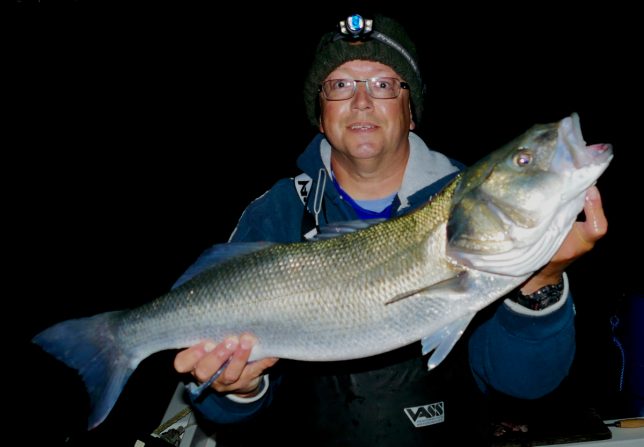Old Methods Still Work by Clive Hodges
In 2017 I have been struggling on my local patch to find any of the big girls (my personal definition – 8lb plus fish). I have introduced some of the latest lures to my armoury but couldn’t give them a fair test as even the tried and trusted lures weren’t producing the fish. The local experts on my patch were finding a few but even they were struggling compared to the last couple of years. In addition, when tried, live baits were lasting all day without being attacked.
Fortunately I am not new to this situation and have many years of experience to draw upon. I thought back to my pre-lure fishing days and started to recall some of my ‘old methods’ and approaches. There is currently a lot of bait fish in my area and I think that this may be due to the recent, very mild winter. We used to refer to the August lull many years ago which was the period when all fish became difficult to entice onto a hook as there was so much food available (crabs, prawns, cuttlefish, whitebait, mackerel and scad on my patch). Any decent sized predator only had to feed for a short period to consume enough food to last them for 12 hours knowing that at the end of that period more food could be found in another, short feeding period.

For bass those feeding periods often coincide with dawn and dusk. I never was much for getting up early so my target would need to be the dusk feeding period. My inshore reefs hold large numbers of small fish and crabs which will happily devour soft fillets of mackerel and scad. Whilst I’d been told of the effectiveness of mackerel heads for bass many years back, it had taken me time to understand why. These are hard items of food and it takes far longer for the small fish and crabs to eat them up. Basically, they allow you to keep an enticing bait on your hook for a longer period of time.
The next piece of the puzzle is easier to apply in a boat but can still be a relevant tactic from the shore if you apply your mind to it. Groundbaiting was extensively used in boat competitions in the past. Because the bass stocks were so much healthier in the 1970s, as gill netting was only just starting, the shallow inshore grounds held good levels of fish. Fresh bass was readily consumed in our and neighbouring houses back then. I learnt when cleaning those fish that bass were a sucker for eating up the loose feed I’d been throwing over the side.
One of my favourite marks back them was a ledge that would trap the food on a particular set of tide. If the bass were visiting that ledge I learnt that the first of the flow would see them feeding on a particular part and my ground bait would hold them long enough for them to pick up the free offerings and then, with a bit of luck, my hook baits.
Thinking this through I had settled on a tactic and the bait to use. All I needed now was a venue. The easy option would have been to try one of the marks of old but my memory told me that the fish wouldn’t be on these until later in the year. Trying too early almost always turned into a dogfish session as they love the groundbaiting approach. I’d spent a bit of time last year fishing a new (to me) patch of rough ground in relatively shallow water. It had the right characteristics to hold up the groundbait and was a good larder for small fish and crabs.
One of my recent purchases had been a Hart Absolute Spin 50g rod and this was the right sort of trip to put it to use. Coupled with a Penn fixed spool loaded with slightly heavier braid and leader than my normal lure rods I was ready for the trip. On the day of the trip the plan worked well, time was allocated to catch mackerel and enough were secured to allow me to groundbait with the flanks, cut into small pieces, leaving the heads to be used for hook baits.
The short feeding period around dusk was targeted and I was happy to bring to the boat just two fish from the four bites that I encountered. One was the stunning 10lb 8oz bass shown in the photo which gave a great account of itself. The other was a 30lb conger that really put the Hart rod through its paces! Both fish were released after capture.
I’ll be back on the lures soon but it was good to mix things up a bit and apply some learnings from the distant past, albeit on a new mark which will need further exploration during the coming months.
First published in Sea Angler in 2017